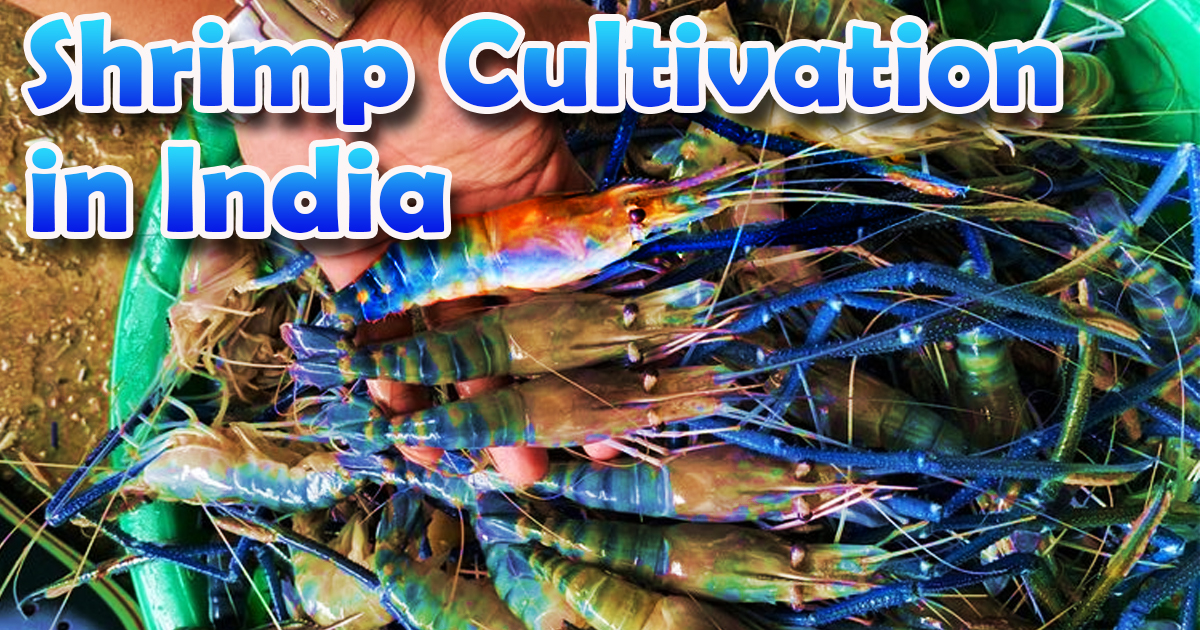 Concept
Concept
TABLE OF CONTENTS
- Introduction
- Key Features of Shrimp Cultivation:
- Contribution to Economy and Employment:
- Government Initiatives and Regulations
Introduction
• Shrimp cultivation, also known as shrimp farming or aquaculture, is the practice of cultivating shrimp for commercial purposes.
• Cultivation of shrimps is a significant economic activity, particularly along the coastal regions where favorable environmental conditions support shrimp farming.
Key Features of Shrimp Cultivation:
• Geographical Distribution: Shrimp cultivation in India is predominantly concentrated along the coastal states, including Andhra Pradesh, Tamil Nadu, Kerala, Odisha, Gujarat, and West Bengal. These regions offer suitable climatic conditions, saline water bodies, and coastal aquaculture infrastructure for shrimp farming.
• Species Cultivated: The major shrimp species cultivated in India include Penaeus vannamei (Pacific white shrimp) and Penaeus monodon (black tiger shrimp). These species are preferred for their fast growth rate, high market demand, and adaptability to various aquaculture systems.
• Culture Systems: Shrimp farming in India employs various culture systems, including traditional extensive and semi-intensive methods as well as modern intensive and super-intensive systems. Pond-based culture, raceway systems, and integrated multi-trophic aquaculture (IMTA) are commonly used techniques.
• Seed Production: Shrimp seeds, known as postlarvae (PL), are produced through hatcheries and nurseries. The hatchery-produced PLs are stocked into grow-out ponds or tanks for further rearing.
• Feed and Nutrition: Shrimp are fed with formulated feeds containing protein, carbohydrates, lipids, vitamins, and minerals to meet their nutritional requirements. Feed management practices aim to optimize growth, minimize environmental impacts, and ensure the health of shrimp stocks.
• Water Quality Management: Maintaining optimal water quality parameters such as temperature, salinity, dissolved oxygen, pH, and ammonia levels is critical for successful shrimp cultivation. Techniques such as aeration, water exchange, and biosecurity measures are employed to manage water quality.
• Disease Management: Shrimp farming is susceptible to various diseases, including viral, bacterial, and fungal infections. Disease prevention and control measures involve strict biosecurity protocols, health monitoring, vaccination, and treatment using antibiotics or probiotics.
Contribution to Economy and Employment:
• Economic Importance: Cultivation of shrimps contributes significantly to India’s economy through export earnings, employment generation, and rural livelihoods. India is one of the largest producers and exporters of shrimp globally, catering to international markets such as the United States, European Union, Japan, and China.
• Employment Opportunities: Shrimp farming provides employment opportunities for coastal communities, including farmers, laborers, hatchery operators, feed manufacturers, processing plant workers, and exporters. It supports livelihoods and contributes to poverty alleviation in rural areas.
• Environmental and Social Considerations:
• Environmental Impact: Shrimp cultivation can have environmental implications, including habitat degradation, water pollution, biodiversity loss, and mangrove deforestation. Sustainable shrimp farming practices, such as eco-friendly pond management, mangrove conservation, and water reuse systems, aim to mitigate these impacts.
• Social Issues: Shrimp farming may also pose social challenges such as land tenure conflicts, displacement of traditional fishing communities, and labor rights issues. Addressing these concerns requires inclusive governance, stakeholder participation, and adherence to social responsibility standards.
Government Initiatives and Regulations:
• Regulatory Framework: In India, shrimp farming is regulated by government agencies such as the Marine Products Export Development Authority (MPEDA), Coastal Aquaculture Authority (CAA), and state fisheries departments. These agencies enforce aquaculture guidelines, licensing requirements, and environmental regulations to ensure sustainable practices.
• Promotional Policies: The Government of India promotes shrimp cultivation through various incentives, subsidies, and financial assistance schemes for aquaculture development, infrastructure investment, technology adoption, and export promotion.
 Chinmaya IAS Academy – Current Affairs Chinmaya IAS Academy – Current Affairs
Chinmaya IAS Academy – Current Affairs Chinmaya IAS Academy – Current Affairs
